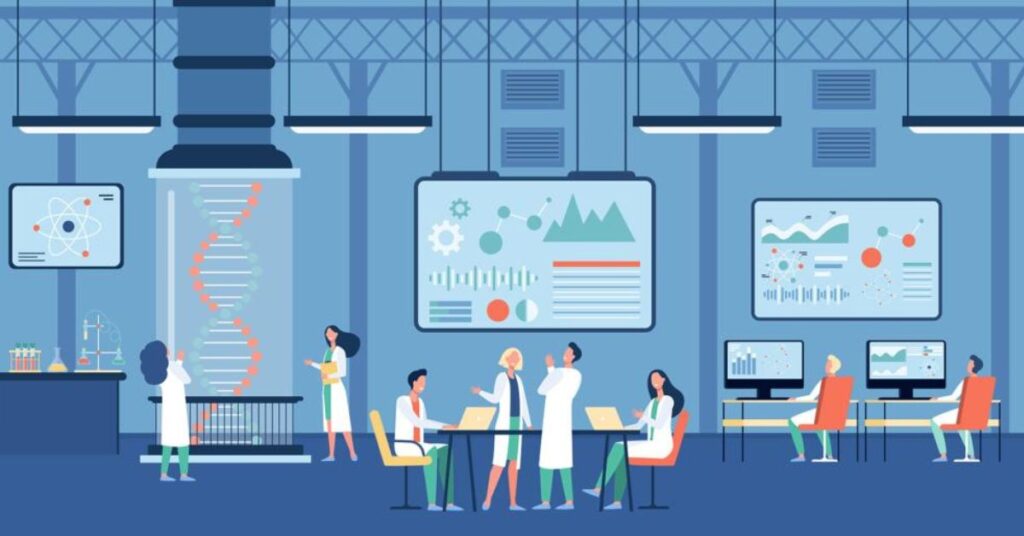Laboratory software has become a highly useful tool for healthcare providers and researchers. In healthcare settings, lab results are the basis for a huge part of medical decisions, from diagnosing diseases to monitoring the efficacy of treatments. By automating lab processes and delivering reliable results, healthcare providers can make better decisions that help their patients.
Meanwhile, in scientific research, lab software can validate hypotheses, develop new products or therapies, and even advance scientific knowledge. Researchers can manage large amounts of data generated from their experiments, work with colleagues across different institutions, and feel confident in the accuracy of their findings.
About these processes you have probably heard about the two types of laboratory information management software: Laboratory Information Systems (LIS) and Laboratory Information Management Systems (LIMS). While both systems manage lab data and workflows, they serve different purposes and cater to different laboratories.
Let’s have a quick look at the main differences between LIS and LIMS:
| Feature | LIS (Laboratory Information System) | LIMS (Laboratory Information Management System) |
| Primary Focus | Patient-centric data management | Sample-centric data management |
| Typical Users | Medical, clinical, and healthcare labs | Diverse lab types (research, manufacturing, quality control, etc.) |
| Key Functions | Test ordering, results reporting, billing | Sample tracking, workflow management, instrument integration |
| Data Management | Manages patient data, test results, and diagnoses | Manages sample data, test results, and associated metadata |
| Reporting | Generates patient reports, lab performance metrics | Generates sample reports, quality control reports, regulatory compliance |
| Regulatory Compliance | Focuses on healthcare regulations (HIPAA, HL7) | Adaptable to various industry regulations (FDA, EPA, GLP, GMP) |
| Flexibility | Designed for specific clinical workflows | Highly configurable for different lab workflows and processes |
| Integration | Integrates with healthcare systems (EHR, billing) | Integrates with instruments, enterprise systems, and other software |
LIS is designed for medical and clinical labs, focusing on patient data management and reporting. Meanwhile, LIMS is more versatile and can be adapted to various lab types, focusing on sample management, workflows, and instrument integration.
Now that you have a good idea of their differences, we will help you choose which type of software is best for you. We will consider various factors, such as your laboratory’s type and size, specific workflow requirements, and regulatory and compliance needs. By the end, you should be able to decide which solution best fits your lab’s needs.
Factors to Consider
1. Type and Size of the Laboratory
You might find LIS a better fit if you run a clinical and diagnostic laboratory where you mainly handle patient samples for healthcare purposes. On the other hand, if you are in research and development, quality control, and environmental testing, you may benefit more from a LIMS as this software often deals with diverse sample types, complex workflows, and extensive data management and analysis.
2. Workflow
Some labs have highly specialized testing procedures, while others need advanced data analysis and visualization. You must understand what your lab needs so you can choose software that can accommodate your unique workflow.
3. Integration
You should check whether your chosen software can easily integrate with your lab’s existing systems and instruments. This includes exchanging data with EHR systems, instrument software, and other lab informatics solutions. You must also consider any potential challenges and costs of the integration.
4. Regulatory Compliance
Your chosen software should support your lab’s specific regulatory and compliance needs. This means it should have features that allow audit trails, electronic signatures, data access controls, and the ability to generate compliance reports.
5. Budget and Resources
While both systems offer significant benefits in making lab processes efficient, productive, and manageable, they also require an investment in software licenses, hardware, and personnel training.
Consider the total cost of ownership, including initial implementation cost, ongoing maintenance, and support fees. You might also need to pay for extra customizations and integrations.
Beyond finance, you should also consider internal resources and whether you have the necessary staff and skills to implement your chosen software solution effectively.
Taking the Hybrid Approach
You may need to combine both systems to support your workflow and processes. When taking this route, it’s important to make sure both LIS and LIMS can communicate and share data smoothly. This might require creating custom interfaces or using standard data exchange formats. It’s also important to align workflows and processes across both systems to support the lab’s end-to-end operations.
Final Thought
The key to choosing between LIS and LIMS is approaching the selection process with a clear understanding of your lab’s needs and a vision of how the right software can help you achieve your goals.








1 thought on “Which Type of Software is Best? LIS or LIMS?”